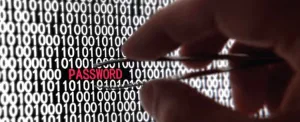
The traveling public knows TSA best for our agency’s mission to protect the nation’s transportation systems, but TSA plays a key role in battling cybersecurity threats and has some tips for all of us to protect ourselves.
By the very nature of TSA’s mission, our agency’s resources are increasingly vulnerable to computer hackers and criminals that seek access to our information, and U.S. aviation and surface transportation owners and operators are among those susceptible.
That vulnerability suddenly came to the forefront following the Colonial Pipeline ransomware attack in May 2021. TSA quickly responded to protect the critical cyber infrastructure of our transportation partners.
“We speak regularly to our industry partners, to the companies we regulate,” said TSA Administrator David Pekoske during a fireside chat with Jen Easterly, director of the Department of Homeland Security Cybersecurity and Infrastructure Security Agency (CISA), at DEF CON 31, an annual hacker conference in Las Vegas. “There’s a more robust exchange of information as a result of this approach. We needed to work really quickly to close vulnerabilities we had across our critical infrastructure in the country.”
Over the last two years, TSA has issued numerous security directives and emergency amendments to protect aviation and surface transportation operators from cyber threats.
“TSA is committed to keeping the nation’s transportation systems secure in this challenging cyber threat environment,” said Pekoske in a July 26, 2023, press release on renewed cybersecurity requirements for pipeline owners and operators. “We will continue to work with our partners in the transportation sector to increase cybersecurity resilience throughout the transportation system and acknowledge the significant work over the past year to protect critical infrastructure.”
At DEF CON, Pekoske said we need to be cyber ready. He emphasized TSA has moved quickly, and so have the agency’s industry partners.
“We know how ready we are and how we can manage any kind of attack on U.S. systems in a way that protects our ability to respond and in a way that protects our population,” said the Administrator. “It allows our population to have confidence in its government and in its industry leaders that they’ve done everything they can to be ready for this. So, preparedness is the name of the game here.”
October is Cybersecurity Awareness Month, which is dedicated for the public and private sectors to work together to raise awareness about the importance of cybersecurity.
In a recent post on X, Pekoske added, "Across @TSA, we've worked hard to increase our resilience as complex cyber threats against our transportation systems continue to evolve, but this can't be done without working together."
Pekoske partnered with Easterly and CISA to release an important video on how everyone can help Secure Our World.
Staying cyber safe
With this the 20th year of Cybersecurity Awareness Month, Victor Pryor, TSA’s Cybersecurity Awareness and Outreach Team lead, wants to stress increased vigilance on building cybersecurity into the culture of everything employees do at TSA and in our personal computer use.
“As technology continues to evolve and surpass the unimaginable, although we are not the Jetsons yet, that means more opportunities for criminals to exploit and manipulate these advancements, using us as the ‘weapon’ of choice,” said Pryor. “Criminals use our lack of knowledge or lapses in behavior to bypass protections and penetrate networks or to get us to provide information for malicious purposes like identity theft.”
Cybersecurity Awareness Month 2023 focuses on four key behaviors – using strong passwords and a password manager, activating multifactor authentication, recognizing and reporting phishing, and updating software.
Use strong passwords and a password manager: Pryor said strong passwords remain an integral line of defense against cybercriminals. “With power comes great responsibility,” he said. “The less you care about your passwords, the easier it is for an attacker to figure them out and access the most critical aspects of your life, both professionally and personally.
“Passwords need to be long and complex although something you can remember without writing down and hiding under your keyboard or in your desk drawer. Password managers can assist you with creating passwords that are difficult to crack and store for you to access when needed.”
Turn on multifactor authentication (MFA): With passwords being one of the most basic forms of authentication, Pryor said they’re not enough, especially if they are not strong and based on clues we unintentionally provide to the bad guys over social media. “It’s time we all take our security a step further and use multifactor authentication,” he noted. “Simply put, this means requiring more than one way to verify your identity when you access a computer system or network.
“Perhaps your smart device and that corresponding text containing a unique number generated for you to enter as additional verification is something you have. Many financial institutions and services that govern your private information now have multifactor authentication as an option, if not a requirement. Verify its availability and make it a requirement to secure your livelihood.”
Recognize and report phishing: Pryor said phishing is the most prevalent way cyber-attackers penetrate our systems and get access to our precious information. They use vulnerabilities in human behavior to get us to fall prey to deceptive emails, texts and phone calls.
“Being able to recognize clues is more paramount than ever,” emphasized Pryor. “Always verify the source, hover over (before clicking) links to identify their true location and avoid sharing sensitive information to avoid taking the bait.
“We must also make reporting a part of our natural response. Simply deleting a phishing email is like killing ants in your house. You may get rid of the one you see, but the ants keep coming back until you call the exterminator to identify and address the source of the problem.”
Update software: Sounds simple, but Pryor reminds us that keeping our operating systems, applications and computer services up-to-date is one of the easiest ways to keep our information secure.
“In the cat and mouse game of cybersecurity, cybercriminals steadily seek to exploit any opening available. Vulnerabilities identified in software represent paths of least resistance. Security fixes and updates close those openings, but they are only effective if implemented.
“If you discover the lock to your front door is broken, you would get it fixed immediately to protect the precious contents in your home. When we discover an entryway into your device is broken, the fix is released in the form of a security patch or update. So, do not wait to secure your device and protect your information.”
Pryor added, “Do your part to #BeCyberSmart and protect yourself. Protect each other.”
By Don Wagner, TSA Strategic Communications & Public Affairs



